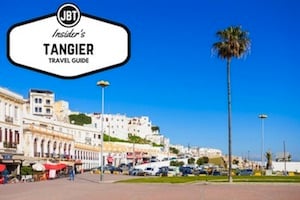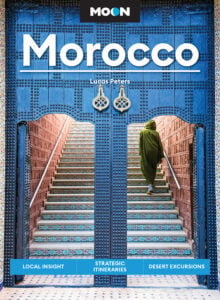 Having an understanding of Morocco’s architecture and the layout of its ancient cities will help you to absorb the full flavor of the country, its history, and people. The architecture within each of Morocco’s Imperial Cities offers onlookers an intricate glimpse into Morocco’s fascinating heritage.
Having an understanding of Morocco’s architecture and the layout of its ancient cities will help you to absorb the full flavor of the country, its history, and people. The architecture within each of Morocco’s Imperial Cities offers onlookers an intricate glimpse into Morocco’s fascinating heritage.
Morocco’s Imperial Cities (Rabat, Meknes, Fez, and Marrakesh) contain ancient city centers called medinas. They were set up as fortified areas divided by dedicated market areas called souks (also spelled souqs). Souks each served their own special functions; pottery souks, leather souks, fabric souks, spice souks, and other types of markets still flourish today.
Additionally, souks contain fuduqs, which are structures housing a workshop at the street level with living quarters on top. In ancient times, these fuduqs were made of mud-brick, but today are most constructed with cement.
 Business thrived in these areas; one major reason they did well was due to their accessibility to the vast crowds moving through their central locations. Some businesses were not as centrally located for various reasons: Tanneries, for example, are filled with the smells of hides and pigeon excrement (a surprisingly expensive solution used to help soften the leather) and would be a burden on the public. As an aside, the Fez Tannery is actually quite centrally located; the newer parts of the town went up around it.
Business thrived in these areas; one major reason they did well was due to their accessibility to the vast crowds moving through their central locations. Some businesses were not as centrally located for various reasons: Tanneries, for example, are filled with the smells of hides and pigeon excrement (a surprisingly expensive solution used to help soften the leather) and would be a burden on the public. As an aside, the Fez Tannery is actually quite centrally located; the newer parts of the town went up around it.
Another interesting part of Morocco’s ancient cities are the Jewish quarters, called the mellah. Mellah, in Arabic, means “salt.” Because some Jewish Moroccans were traders of salt, their region of the city was given this sobriquet. In Fez, for example, the mellah was situated near the city guards and near the royal family’s quarters. While not obvious on first glance, the architecture of the mellah was closer to that of Moorish Spain rather than Islamic Morocco; houses had balconies and columns rather than small windows and arched doorways.
Moroccan buildings today still have a blend of African and Islamic designs, with Islamic styles dominating the combination. As with any architectural style there are some dominant characteristics that make the style specifically Moroccan. Many of the buildings have large, almost intimidating archways. Some structures, such as the tomb of Moulay Idriss in Meknes, hold magnificent domes. Add in the enchanting courtyards and flower gardens of old houses, known as riads (often now serving as guest houses), and you’ll see even more spectacular scenery a world away from the hustle and bustle that is the medina.
A few of the better architecturally designed buildings in Rabat include the Royal Palace, Mohammed V Mausoleum, and the Kasbah des Oudayas. When you take a cultural tour of Morocco into such cities, like that of Fez, do not forget to visit the Museum of Moroccan Arts to get an even better grasp of how the city was set up and how the architecture reveals its past. In Marrakesh, the Palace of the Dead, Saadian Tombs, and the Bahia Palace are extraordinary structures worth viewing.
 Bahia Palace is adorned with floor to ceiling decorations, which the Grand Vizier Si Moussa began in the 1860s. During the 1890’s more decorations were added by Abu Ahmed. The ceilings are gilded and painted with inlaid woodwork and highly detailed stucco work. While some of the ancient opulence has vanished, the palace still exudes a rich history that visitors can truly feel.
Bahia Palace is adorned with floor to ceiling decorations, which the Grand Vizier Si Moussa began in the 1860s. During the 1890’s more decorations were added by Abu Ahmed. The ceilings are gilded and painted with inlaid woodwork and highly detailed stucco work. While some of the ancient opulence has vanished, the palace still exudes a rich history that visitors can truly feel.
by Sam Mitchell








